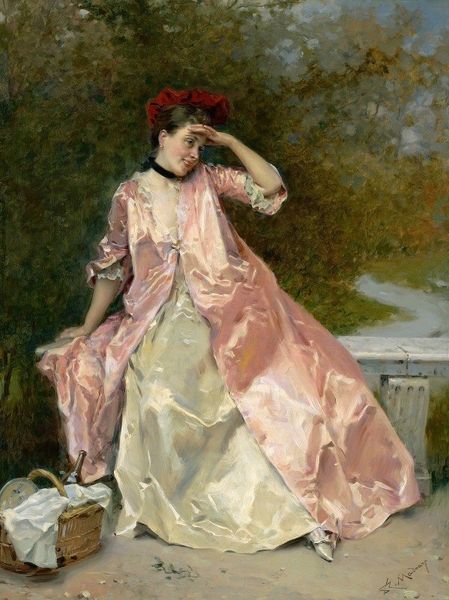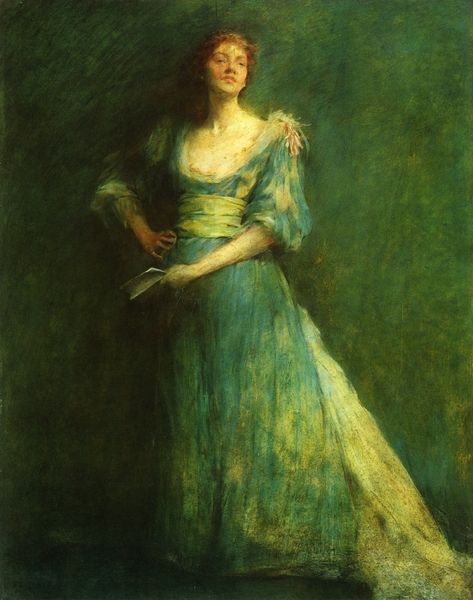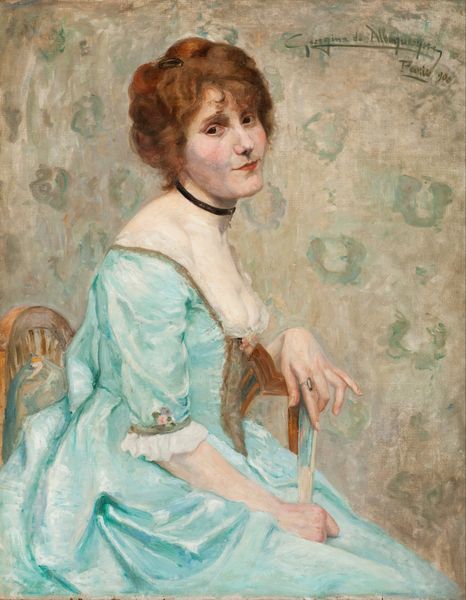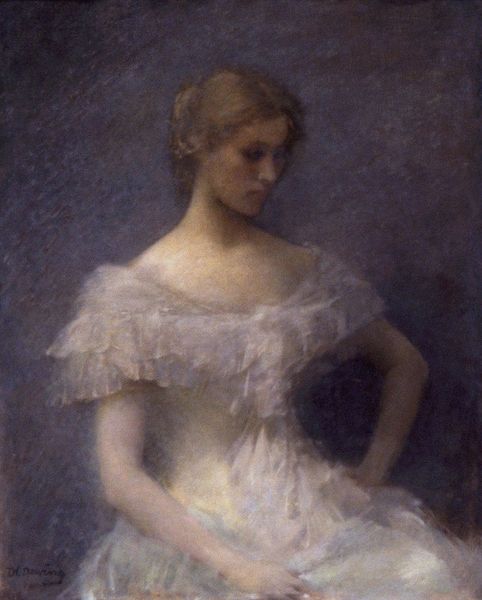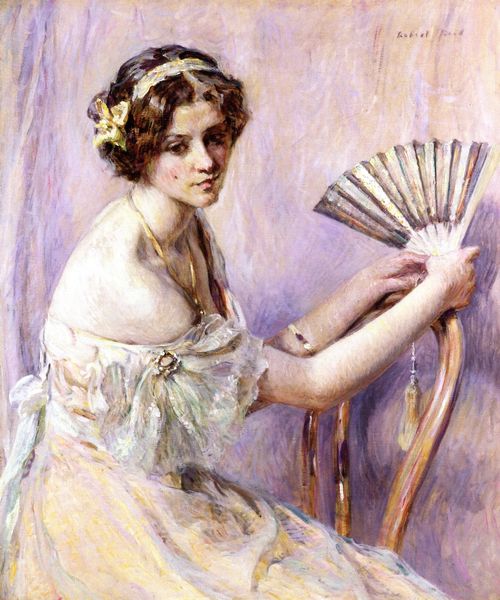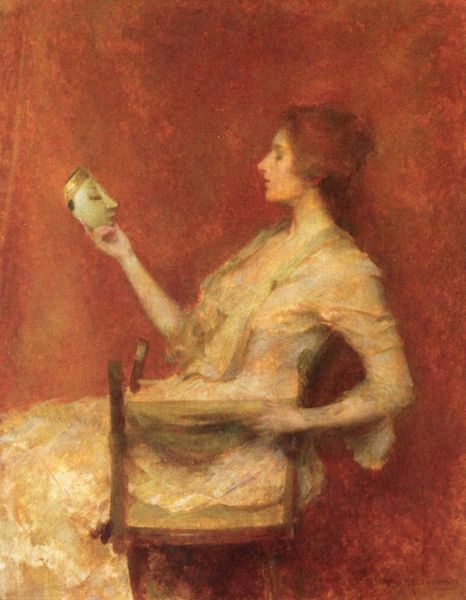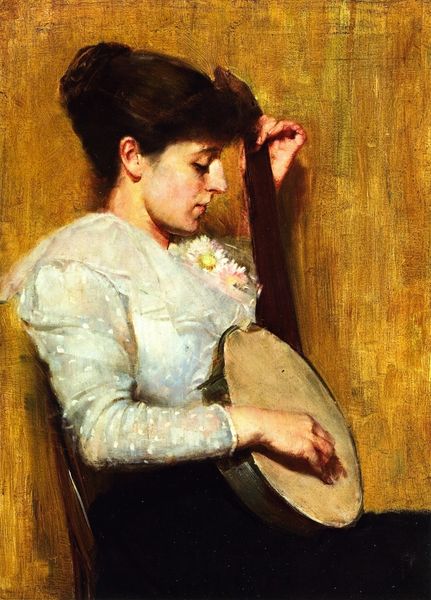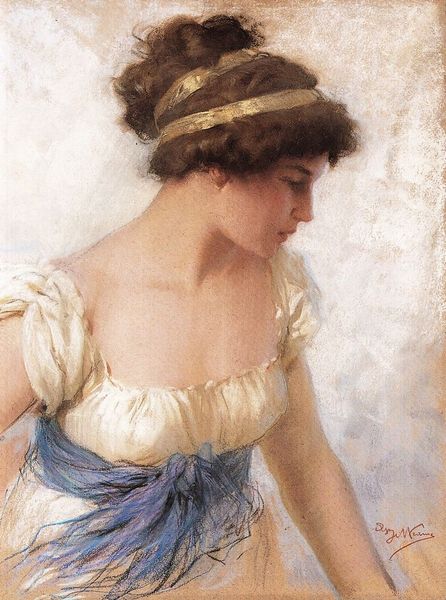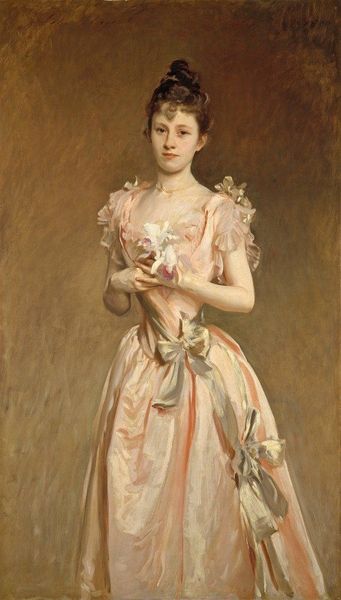
Copyright: Public domain
Editor: Here we have Thomas Wilmer Dewing’s “The Palm Leaf Fan” from 1906, painted in oil. It’s really captivating, especially the way the dress seems to melt into the background. What strikes you when you look at this? Curator: Well, considering the materials, I think we should really be looking at what Dewing is trying to *do* with oil paint here. Notice the almost equal importance given to the figure and the background, created through similar brushstrokes. This blurring challenges the traditional hierarchy in portraiture, doesn’t it? Editor: I hadn't thought about it that way. Curator: Right – instead of showcasing an individual's wealth or status as an individual, which was the established portrait tradition, Dewing spotlights the very *act* of painting. It's less about the woman and more about the materiality of the paint itself. Think about the availability of new pigments at this time, the evolving commercial art world and how this allows a focus on experimentation. Does that resonate with you? Editor: It does. I suppose I was drawn in by the colours and didn't think about how much the artist was exploring the qualities of the paint itself. Curator: Exactly. The impressionistic brushwork isn't just about capturing light; it’s about celebrating the inherent qualities of the oil. Even the so-called ‘subject’ – the woman – seems more like a vehicle for exploring color and texture. Editor: It's almost as if she's wearing the brushstrokes. Curator: Precisely! It questions the consumerism in art; it challenges how labor manifests in artwork. It asks you to ponder, is it the artist or material at the forefront? Editor: This makes me think about Impressionism in a totally different way now. Curator: Hopefully. By focusing on materiality, on the methods of production, we discover fresh meanings in even seemingly straightforward artworks.
Comments
No comments
Be the first to comment and join the conversation on the ultimate creative platform.


